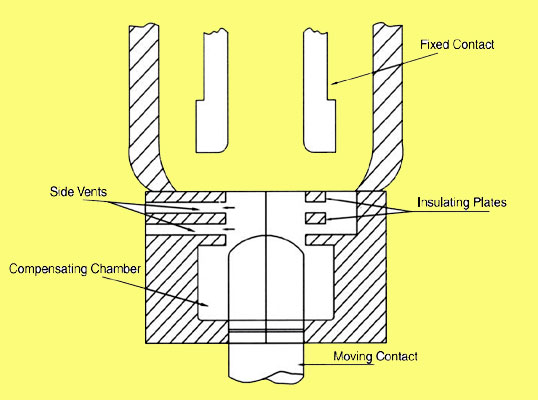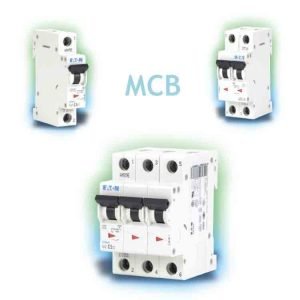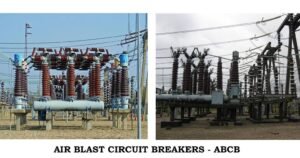What is called Bulk Oil Circuit Breakers?
The circuit breakers in which the contacts part in oil and wherein the oil also provides the main insulation between the live part and earthed metal tank are called bulk oil circuit breakers.
What Does BOCB Stand For?
BOCB is electrical abbreviation of bulk oil circuit breakers.
Initially, the contacts were separated in the oil bath, and the movement of the oil, the cooling effect of the hydrogen created from the oil by the arc, and the distance which separated the contacts, were the factors that cooled the arc path and created the dielectric strength needed to interrupt the relatively small fault currents in the early days of power distribution.
These types of breakers are designed in all voltage ranges from 1000 V to 330 kV. Although the earliest switching devices employed air as the extinguishing medium, it was not long before a better dielectric was needed, and insulating oil soon appeared on the switchgear scene. Initially it was used in small quantities just around the contacts. As larger powers and voltages were required, the oil was also used as an insulating medium in an earthed metal tank and the bulk oil circuit breaker was born.
As fault currents increased, the increase in pressure due to the vaporization of the oil increased the de-ionizing properties of the hydrogen bubble surrounding the arc path, and increased its dielectric strength, thus preserving the breaking capacity of the device. Obviously care had to be taken to ensure that the mechanical strength of the container was sufficient to withstand the higher pressures as Circuit breaker ratings increased, and the proportioning of the air space above the oil became a critical design parameter.
Further research work led to the development of the side-vented ‘explosion pot’ or the ‘cross jet pot’, which forms the basis of arc control device used in oil circuit breakers.
Image is a cross-section drawing of a typical side-vented arc control device. The principle of operation of this device is that the pressure developed by the vaporization and dissolution of the oil is retained in the pot by withdrawing the moving contact through a stack of insulating plates having a minimum radial clearance around the contact. Thus there is practically no release of this pressure until the moving contact uncovers one of the side vents, created by cutting a slot in one of the plates.
 |
| Side-vented arc control device |
The compressed hydrogen gas can then escape across the arc path, thus exerting a powerful cooling action on the ionized column. When the current zero is reached, the post-arc resistance increases rapidly due to this cooling action and clearance occurs.
At currents below the maximum rating of the circuit breaker, the cooling action is less vigorous, but the degree of ionization is also less, which is why clearance is still achieved. The design of an effective, wide range, arc control device requires a careful balance of the vent areas, vent spacing and contact speed to ensure consistent performance over the full range of currents. These circuit breakers face problems when clearing low currents, such as the load current of the circuit breaker.
One of the refinements made in the design to improve the interruption of small currents was the introduction of a supplementary oil chamber below the side vents. This is known as a compensating chamber and provides a fresh source of oil to be vaporized in order to feed more clean gas back across the arc path when clearing low currents. As with all types of circuit breakers which use the power of the arc to provide the means for its own extinction, there exists a ‘critical zone’ in the breaking current range.
BOCBs usually have a metal top dome, through which six bushings pass to connect into the system, and the arc control devices, generally of the form illustrated in the image., are attached to the bottom ends of these bushings. The moving contacts are then arranged on a bridge, which, in turn, is fastened to an insulated drive rod. A removable tank containing the insulating oil is bolted to the dome.
 |
| View of bulk oil circuit breaker |
The earlier designs had two sets of contacts and arc control devices in series in each phase, and this type of oil circuit breaker was called ‘double break’. However, considerations of the voltage division between these two breaks during the recovery period led some manufacturers to create single break designs.
 |
| Breaker with oil tank lowered |
The development of BOCBs was limited to the 330 kV class. The limitations were mainly due to the use of a very large amount of oil (app. 50,000 | for a 330 kV circuit breaker), the requirement of a very high speed of contact separation and the use of a large energy mechanism. After bulk oil devices, minimum oil circuit breakers and air blast circuit breakers were introduced.
Final Word
Hope you understand this article about Bulk Oil Circuit Breaker (BOCB). Incase of any doubt please comment below. Subscribe our website to get every new post update to your email. Please follow our website – ElectricianWorld.net for future updates. Thank you for visiting our website.




Very Comprehensive article